
Perhaps the most geologically active country in the world, Iceland is home to myriads of volcanoes, including Fagradalsfjall volcano that as of 2021, incessantly erupts. While an unsuspecting passerby might mistake Skútustaðagígar’s craters with volcanoes, this series of oddly shaped formations in northern Iceland are in fact the result of a rare geological phenomenon. The otherworldly landscape of Skútustaðagígar is easily accessible, making it one of Mývatn Lake area’s most remarkable sites to visit.
Nestled along Mývatn Lake, adjacent to the regional ring road, Skútustaðagígar is 10-minute drive away from the village of Reykjahlíð.
The dozens of Skútustaðagígar’s craters were formed when molten lava inundated the surrounding wetland, burying a sheer amount of boiling water under a thick layer of blazing volcanic matter, resulting in an immense build-up of pressure that ultimately burst as steam explosions, leaving a crater around them. While Skútustaðagígar is by far the largest concentration of pseudo-volcanoes anywhere in Iceland, this rare geological formation exists in other locations throughout the country and around the world, particularly in Hawaii, where it’s called littoral cones, created by hot lava spilling into the Pacific Ocean.
The 1.5-kilometer Crater Trail meanders between several pseudo-volcanoes from the roadside parking to the out-of-service Hotel Gígur.
The entrance to the natural complex is a via a small pedestrian gate near the former hotel.
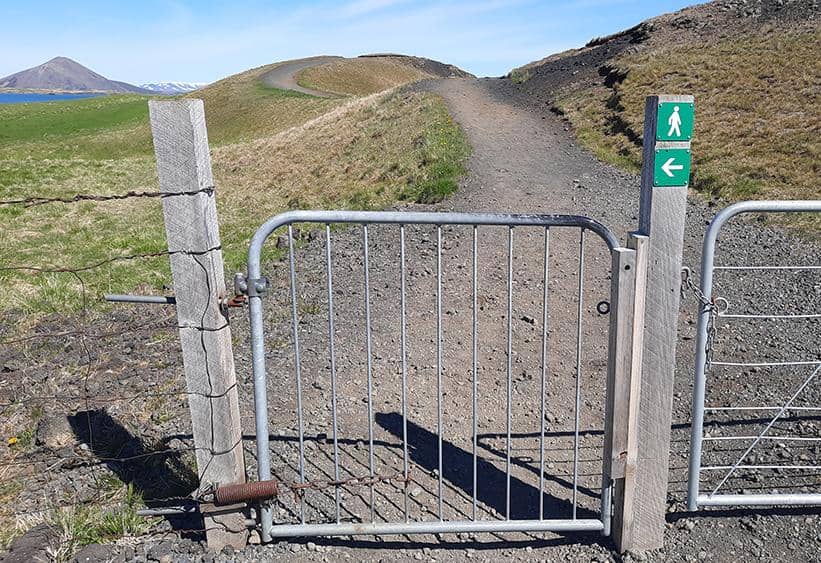
photography by: Omri Westmark
The narrow pathway winds around the volcano-shaped formations with very small elevation gain along the trail.
Interestingly, all the volcanoes of Skútustaðagígar have names, all of which are mentioned at the info plaque next to the site’s entrance.

photography by: Omri Westmark
As you walk along the trail during the warm season, you’ll most probably encounter at one point or another an irritating swarm of midges, a tiny flying insect that is widespread around the lake. Unfortunately, the only effective way of getting rid of the nuisance is by wearing a mosquito head net.
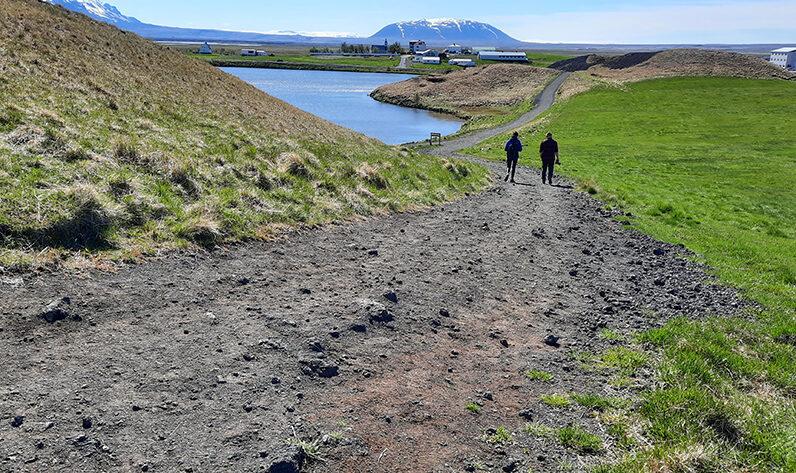
photography by: Omri Westmark
When passing near a pseudo-volcano, the trail connects into an elevated walkway that heads to the top of the hilly formation.
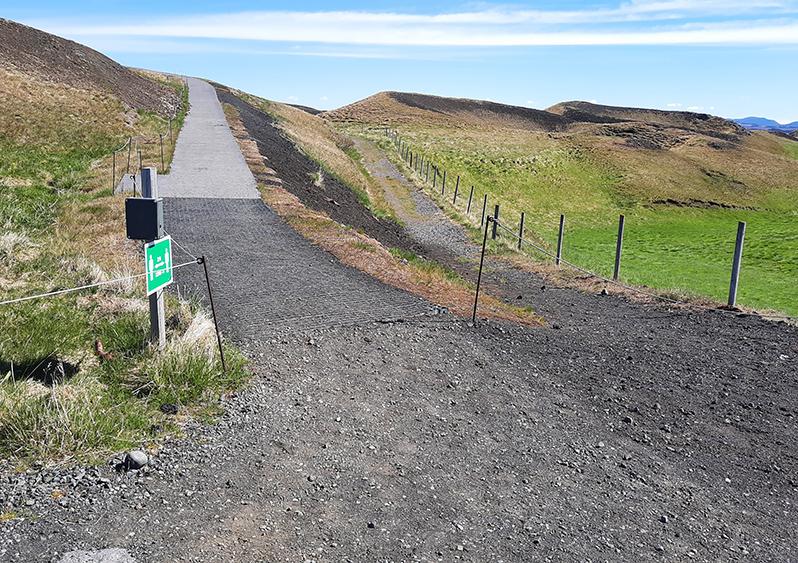
photography by: Omri Westmark
Since most of the fake volcanoes barely exceed 10 meters, the uphill walk is incredibly easy and best-suited for practically anyone.
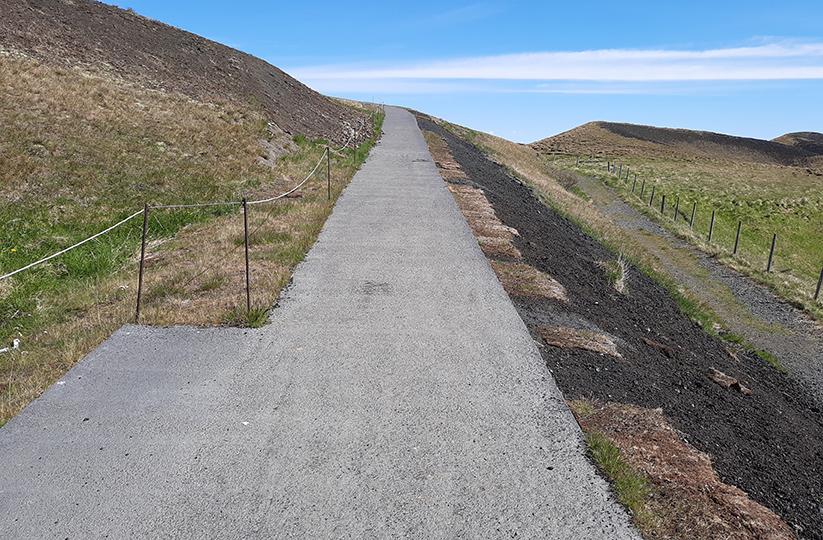
photography by: Omri Westmark
Situated at the top of Hræðuhver pseudo-volcano, this scenic spot offers a spectacular panoramic view of the craters, the surrounding village and the vivid blue waters of Mývatn Lake.
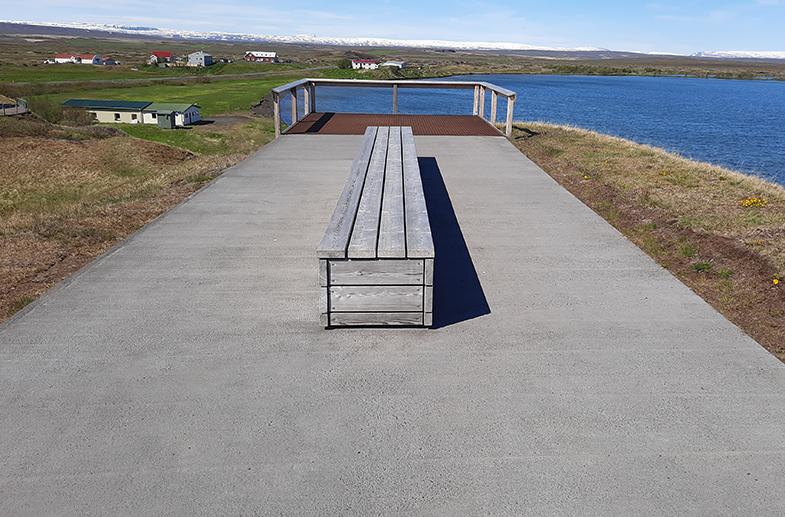
photography by: Omri Westmark
The crater’s inner part is usually covered by short grass, while access is restricted as a measure to protect the native flora.
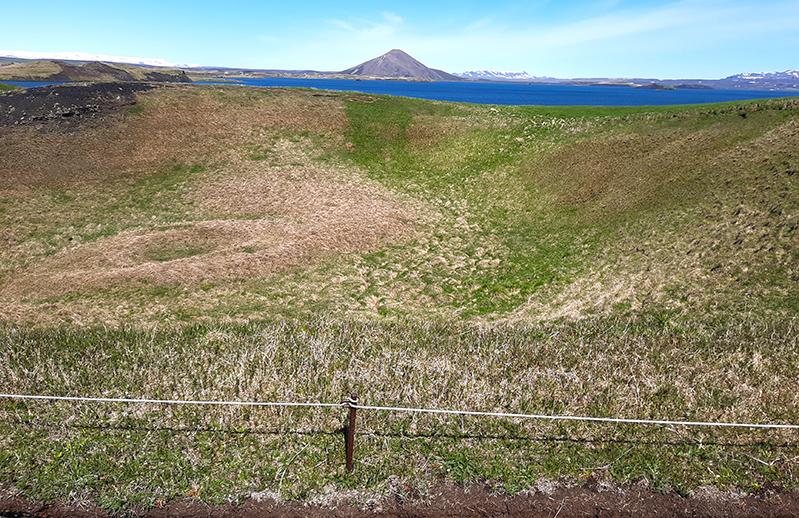
photography by: Omri Westmark
As you gaze at the landscape from a higher elevation, you’ll come across several pseudo-volcanoes that seem far more recognizable as such when compared to the ground level, where most of which simply look like verdant hills.

photography by: Omri Westmark
A panoramic view from the rim of a pseudo-volcano. The photographed lake is not Mývatn, but Stakhólstjörn, a pond sandwiched between the ring of fake volcanoes and the main road.
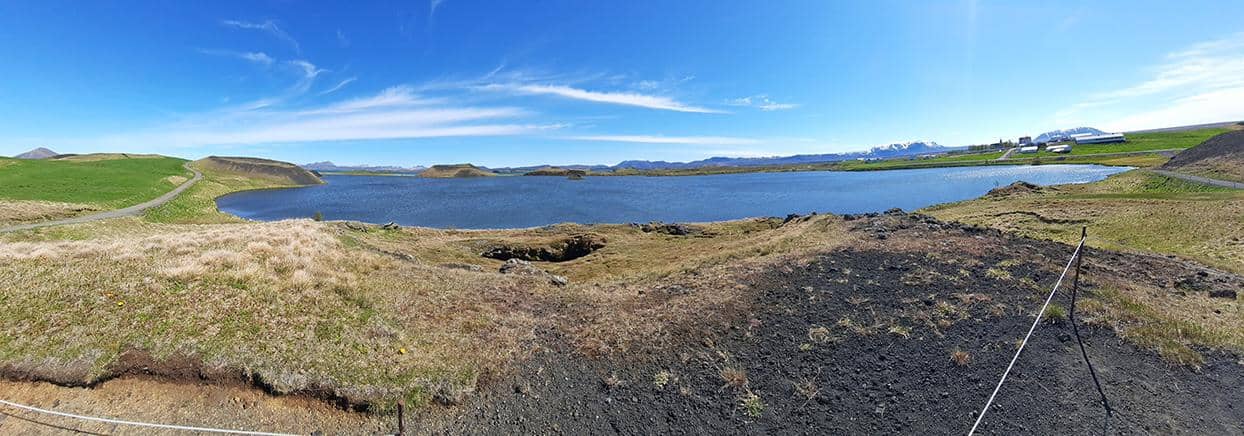
photography by: Omri Westmark
A bottom of one of the craters on the backdrop of Stakhólstjörn Lake, as your eyes can see, the crater itself is partly covered with Icelandic moss and grass, serving as a habitat for a plethora of native animal species.
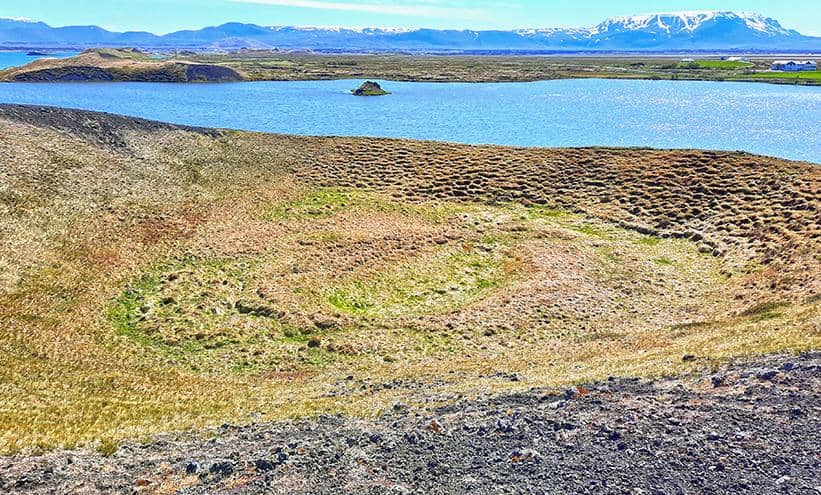
photography by: Omri Westmark
Rófugerðíshóll pseudo-volcano as it seen from the trail. It is topped by a viewpoint that overlooks Mývatn Lake and its surrounding formidable massif.
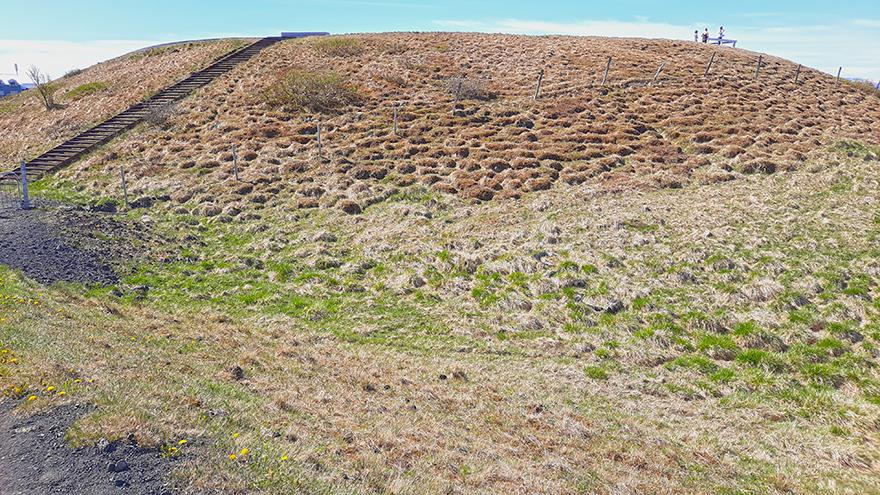
photography by: Omri Westmark
While the site is not covered entirely by fake volcanoes, its terrain tends to be rater hilly and convoluted thanks to the same geological process that took place more than two millennia ago.
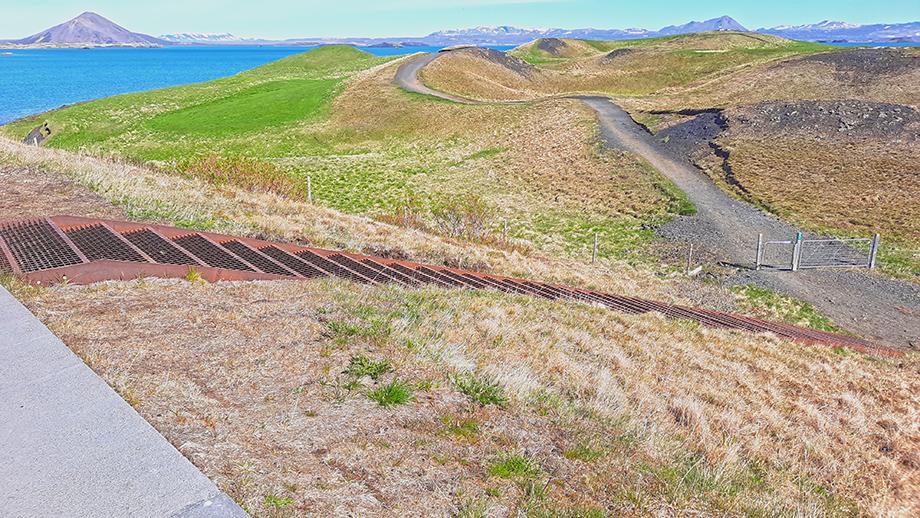
photography by: Omri Westmark
At the slope of some of the pseudo-volcanoes are metal-lattice staircases that provide visitors with an access to the hilltop, from where expansive views are guaranteed.
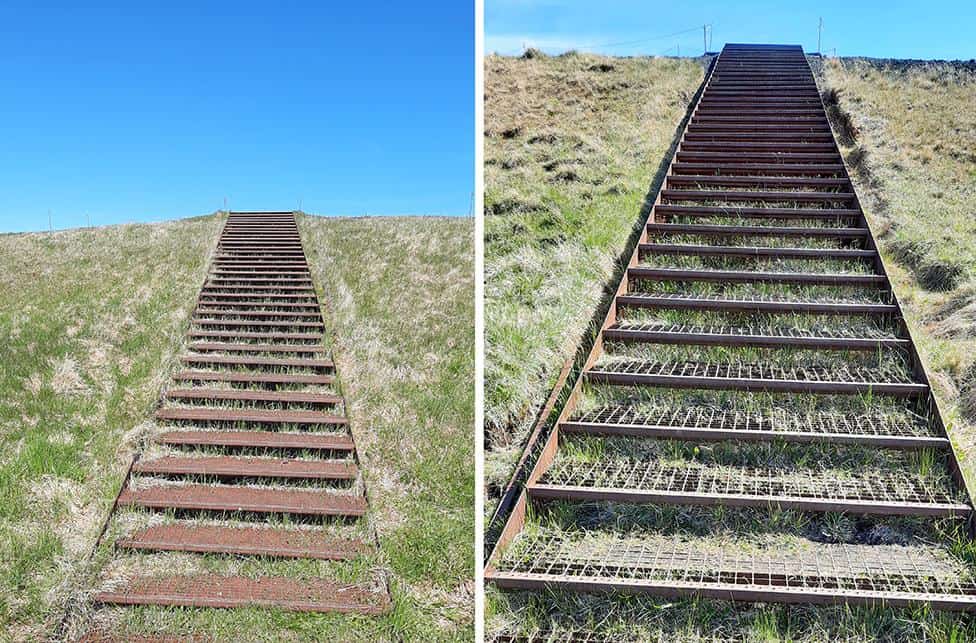
photography by: Omri Westmark
Hilariously, the staircase is far wider and longer than it’s steep, making it an antidote to a typical Dutch-style staircase in Amsterdam.
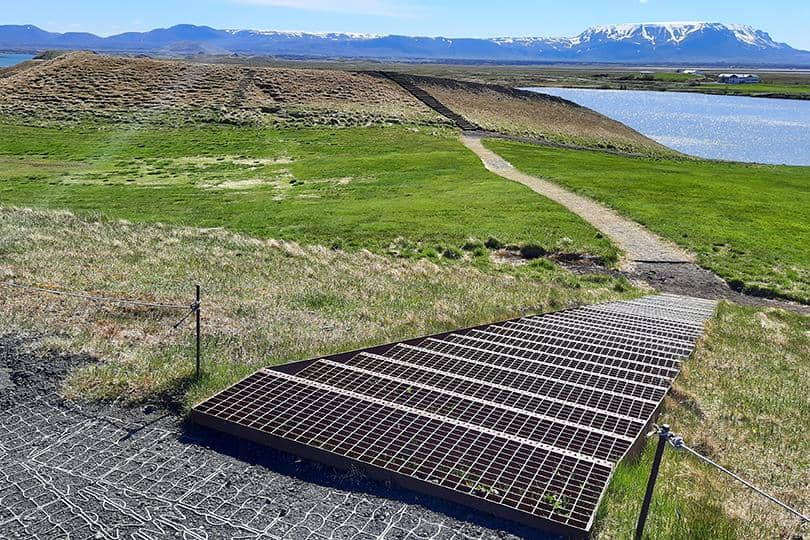
photography by: Omri Westmark
Once on top of Geitagjá pseudo-volcano, it’s possible to walk along its rim. Depending on which direction you gaze, you can either have a glimpse of its crater if you look inward or the surrounding landscape in case you look outward.
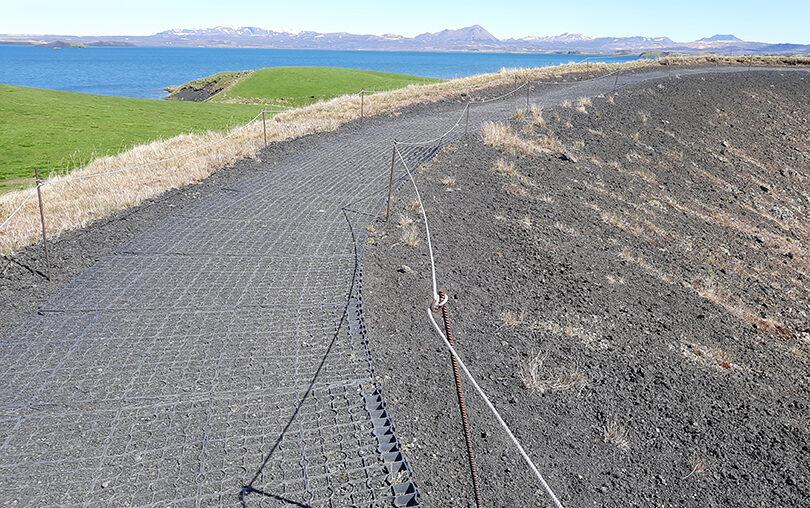
photography by: Omri Westmark
Interestingly, the landscape varies in terms of vegetation, intermittently covered by green meadow and bare soil with little dry grass.

photography by: Omri Westmark
Skútustaðagígar might be synonymous with its geological rarity, however, it also serves as a habitat for myriads of endemic animals, most notably almost 150 bird species. Whereas most visitors stroll between the pseudo volcanoes and skip the rest of the site, the less-visited bird trail offers an interesting sighting of wildlife around the Stakhólstjörn pond.
Among the bird species found here are horned grebes, widgeons, tufted ducks, common redshanks, arctic terns, gadwalls, mallards, whooper swans, great northern divers and a host of other winged critters.
The 3-kilometer bird-trail meanders between pseudo volcanoes, the Stakhólstjörn lake and several small wetlands. Like the crater trail, it doesn’t entail a strong physical fitness as the terrain is mostly flat.
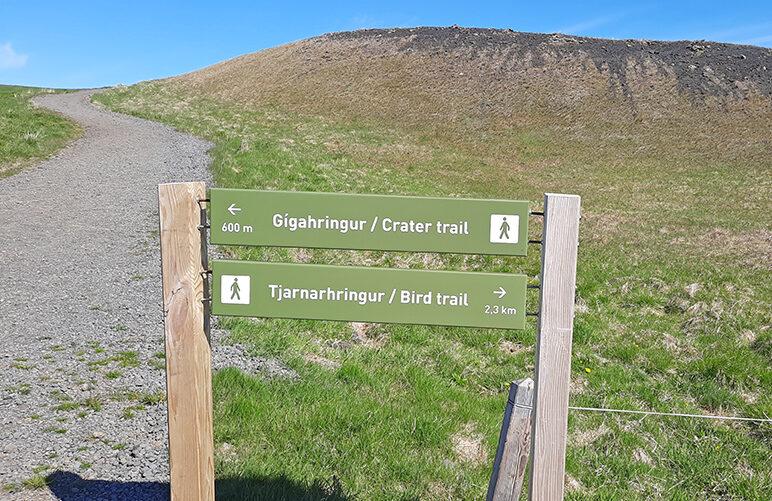
photography by: Omri Westmark
A large segment of the Bird Trail winds around Stakhólstjörn pond, where different species of waterfowls often find refuge in.

photography by: Omri Westmark
The pond is relatively shallow and clear, yet due to its protected status swimming is strictly forbidden.

photography by: Omri Westmark
As you gaze around, you can notice that some of the pseudo volcanoes perching along Stakhólstjörn’s banks.
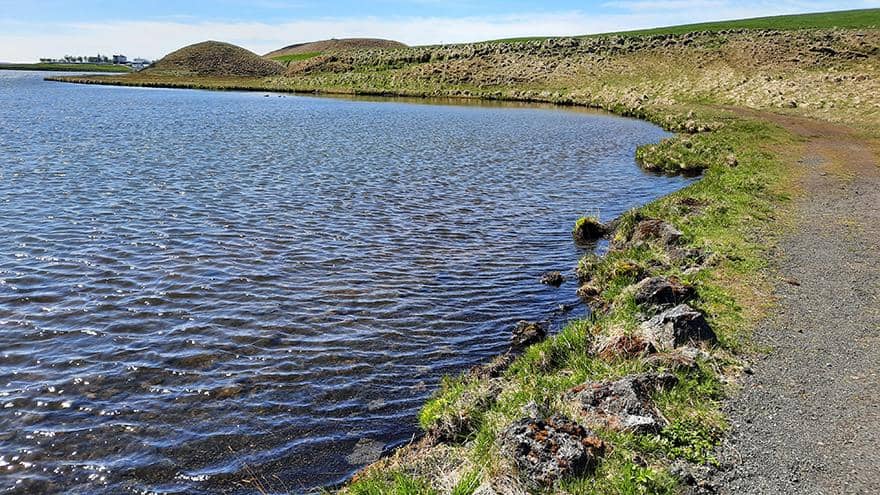
photography by: Omri Westmark
The pond, its grassy banks, its pebble-rich bed and the row of fake volcanoes that sits along its shoreline.
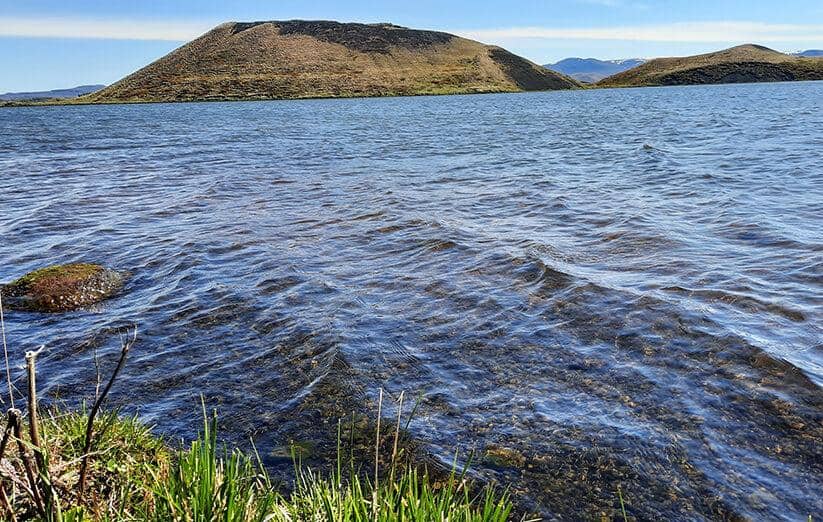
photography by: Omri Westmark
As you continue through the pathway, you’ll come across water-birds hovering over the lake, scanning its surface for any potential prey.
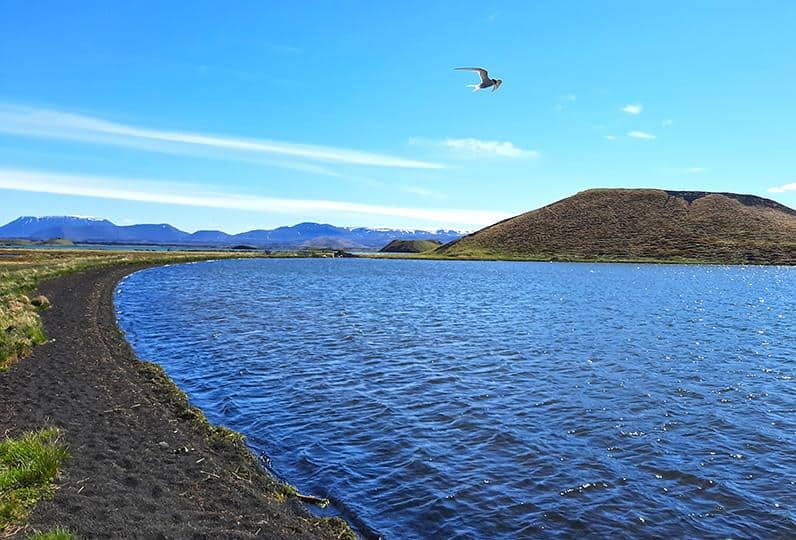
photography by: Omri Westmark
A pair of horned grebes gently wade its way through the pond, basking under the Icelandic morning sun.
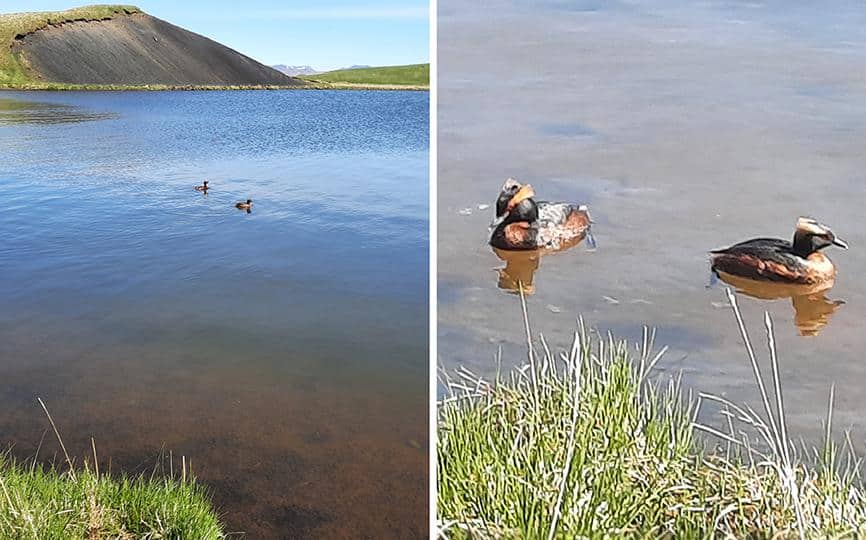
photography by: Omri Westmark
Alongside the many species of birds are also herds of sheep grazing between the pseudo-volcanoes and the lake.
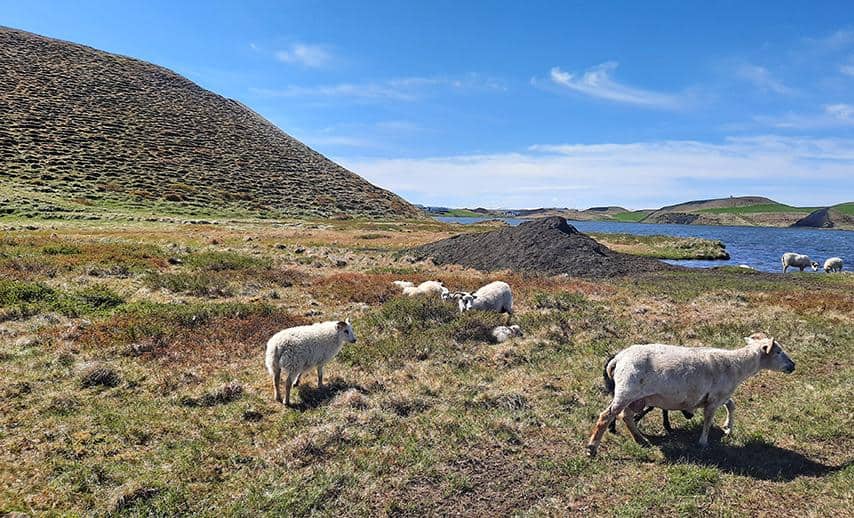
photography by: Omri Westmark
It might come as a surprise, yet Skútustaðir is not merely the site of mesmerizing natural monuments but also a small rural community with few accommodation options for the intrepid travelers who visit the region. Originally, the hamlet had only a single church and a farm, that has been considerably expanding even since.
Besides its hotels and a small souvenir shop, the village is renowned for its legendary ice-cream parlor, Skútaís – Farm Ice Cream, which offers an assortment of locally produced ice-cream, made of fresh milk that encapsulates the pureness of the surrounding pristine meadow.
In order to get there, just cross the main road, as the village is located south of the lake and the pseudo-volcanoes.
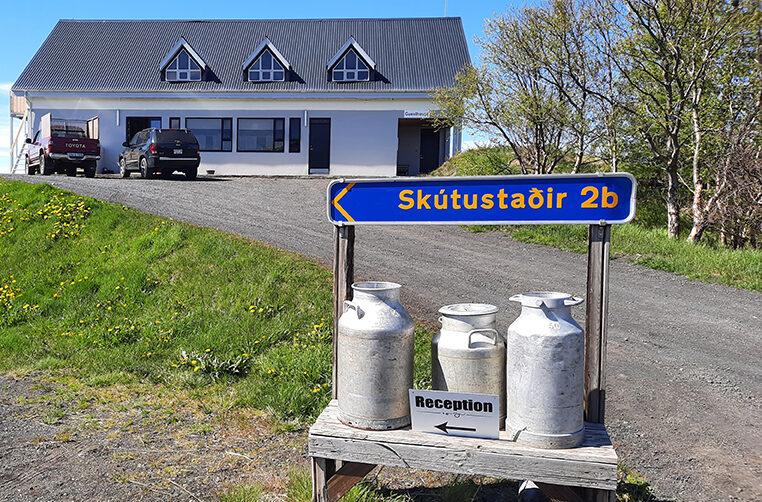
photography by: Omri Westmark
A rather modest, green wooden hovel with a cartoonish icon of ice-cream cone welcomes customers as they head into the shop. Among the flavors are rhubarb and strawberries, salted caramel, blueberries and perhaps most interestingly, salty liquorice with vanilla.
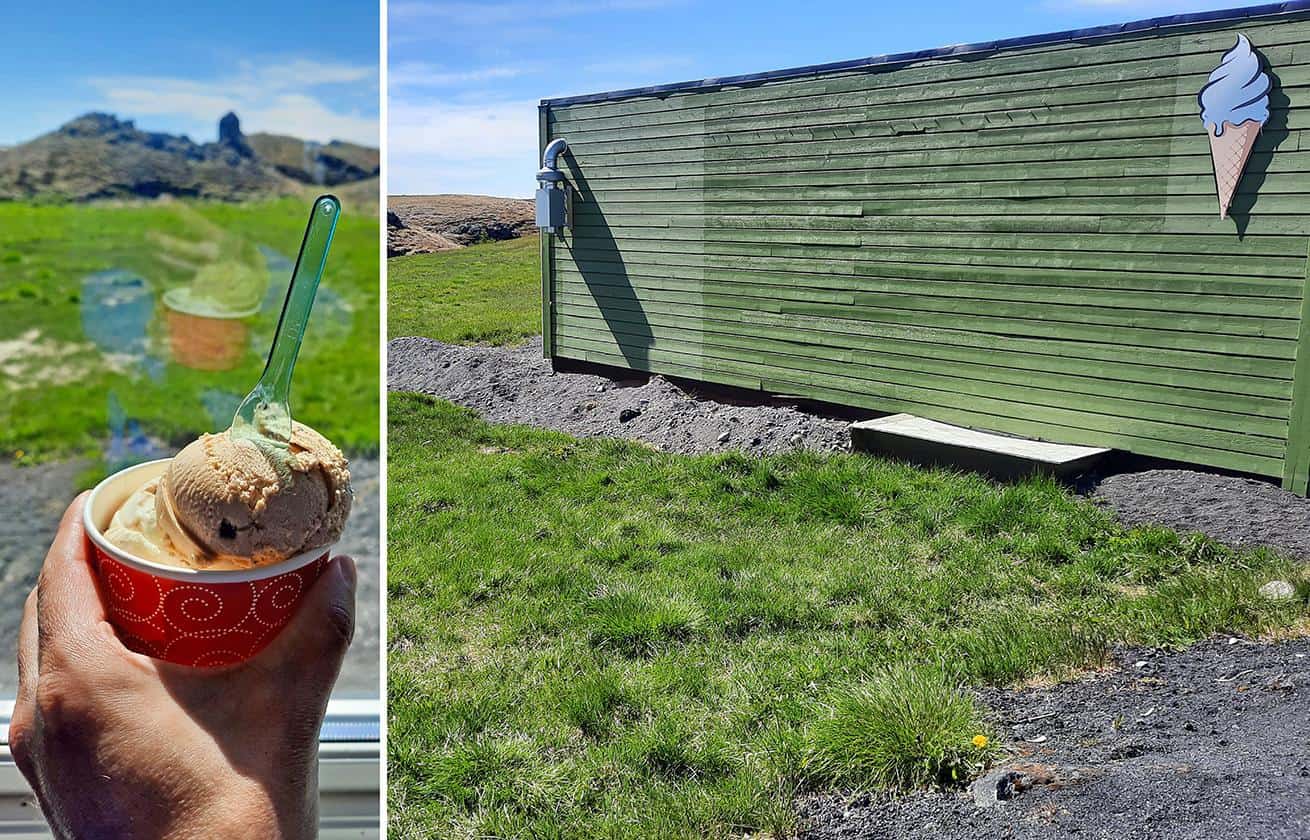
photography by: Omri Westmark